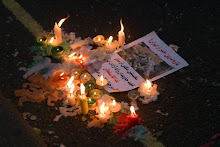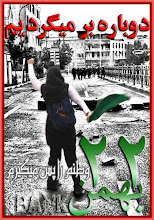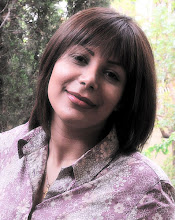
There’s a delicious anarchy about these events. Open studios herald the annual clean up. Kilns are pressed into service as giant plinths, bookshelves become display shelves, newspaper cuttings become exhibits and you find yourself wishing that galleries could find a bit of this make-do-and-mend spirit. The degree shows do their damnedest to conform, and some, unfortunately, succeed, but in most cases, and Westminster was no exception this year, the students are too varied and hopelessly ill-matched and the ‘galleries,’ for all their scrubbing and painting and hiding of sinks, are still studios really. Hooray. You can find work in something close to its raw state at a degree show and makers who are still able to enjoy the adventure, not yet cowed by oppressive art or craft world orthodoxies and, equally important, not yet constrained by the expense of producing work which requires big expensive equipment, or which needs to inhabit a large space.
Kingsgate Workshop Trust was celebrating its 30th birthday, showing off its new education building and generally strutting its venerable stuff. These are established studios and have the painty patina to prove it. There’s furniture, big stuff, in the basement with much whirring of machines and someone making extraordinary pink and blue chairs, and someone else making formica furniture for cafes and offices. These are proper, sleeves-rolled-up places, urban – what shall we say – terraced industries?
Kingsgate also hosted a glistening exhibition of their ‘emerging artists’, three of them, Olivia Horley, Jo Dawn and Anthony Luvera: Ceramics, Printed textiles/furniture, and Film/photography. It was the sort of show that flickers past in a couple of weeks and evaporates, except in memory, because one so wishes there were more shows like it. We don’t get shows that mix docu-photgraphy about homeless geezers with domestic tableware and printed textiles all ringing with bird-song. Can you think of a more perfect narrative to be huddled in one show? No? Me neither. But spurious categorisations and artworld gender-cleansing ensures that we are never permitted to contemplate the domestic as proper art.
Consuelo Siexas Radclyffe (Westminster)did all those astounding doll works, one pictured above, all the rest in the next post below. Working with child images is difficult enough, but dolls! You just couldn’t stop looking at them. In the past decade or so, much longer than that really, there has been a trend to portray children, especially girls, as somehow menacing or threatening, or just evil. It’s a deeply reactionary, Victorian obsession which, to put it absolutely brutally, is really about defending incest / rape, the right of the male patriarch, the paterfamilia, to practice ‘droit de seigneur’ with girls and young women with absolute impunity. The sensationally, revolutionary BLISS of this woman’s work is that she portrays her girls as deeply human and interactive, with each other rather than the audience. She’s not afraid of the complications of girlishness. They’re arguing with each other and gossiping and so on, but there certainly isn’t any misogynistic girl-hating / girl-blaming crap that one finds in mainstream artworld galleries where girls are portrayed as fiendishly sexual and the authors of their own destruction.
Mitzuyo Yamashita, (Westminster) makes little buildings and trees and then puts them all together into a weird city with giant plastic animals pacing down their otherwise deserted streets. These nightmare small towns really come to life when you photograph them. Never encountered ceramics like that before. They don’t usually like the camera much.
Claire Palfreyman did the transboybunnies. They’re hoodies really but they’ve sprouted bunny ears. We’re at Kingsgate open studios now, so Claire’s work is nestling in its clutter. Work which examines masculinity usually wanders off into transgender territory. I much prefer this trans-species approach. It’s funnier and also more affecting.
The stuff that looks like a thesis on tonal variation between white and slate-grey, like some kind of ceramic version of a highly complex but very spare quartet for obscure stringed instruments, that’s Sarah Scampton’s work. The strange looking form on top of the filing cabinet is a monument to Durer and something of a monument to Scampton’s relentlessly inquiring, probing and probably slightly obsessive mind. Those things that look like lengths of hose-pipe hanging up are actually fired clay and they’re hollow. I decided it was best not to think about it too much.
Now here’s what I love about ceramics, you can move effortlessly from urban transbunnyboy to pure maths with a hint of applied physics in a matter of a couple of studios, or from surreal, nightmarish, virtual photo-ceramics, some kind of liminal no-town, to infinitely real, conversational, brown-girls from not-rich Brazil, lots of them talking, doing, being, arguing, hanging out, avoiding boys, – and how often do you hear those voices? All this in one day and two venues. Show me any other artform that can do that and does it with such style! There aint one. And that’s a fact.






















































